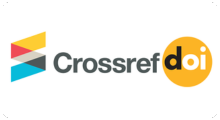Electronic Learning System in Teaching Mathematics Enhancing Achievement among Students
DOI:
https://doi.org/10.11594/ijmaber.06.06.23Keywords:
Computer-Aided Instruction (CAI), Mathematics AchievementAbstract
This study investigates the effectiveness of Computer-Aided Instruction (CAI) in improving mathematics achievement among 70 Grade 7 students over an eight-week period at Bacongco National High School. Using a quasi-experimental design, it compares CAI with traditional lecture-based teaching through pretest and posttest assessments. Grounded in Constructivist, Behaviorist, and Cognitive Load theories, the research explores how CAI may enhance active learning, reduce cognitive overload, and increase engagement.
Participants were split into two groups: one received CAI-based instruction, while the other followed traditional methods. Pretest results showed both groups performed at a “weak” level with nearly identical scores (CAI: 14.34%, traditional: 14.29%), indicating similar academic baselines. After the intervention, both improved to a “developing” level (CAI: 20.06%, traditional: 20.86%). However, statistical analysis found no significant difference in posttest scores or mean gain scores (CAI: 5.71%, traditional: 6.57%, p > 0.05). While both approaches were equally effective in enhancing performance, the short duration of the study (eight weeks) may have limited CAI’s impact. The findings suggest CAI should be seen as a complementary tool rather than a replacement for traditional instruction.
The study recommends longer-term implementation, development of localized CAI materials, and teacher training to maximize benefits. It contributes to the broader discourse on educational technology by affirming the comparable effectiveness of CAI and traditional methods, while emphasizing the need for strategic planning, contextual adaptation, and institutional support to optimize technology integration in education.
Downloads
References
Abusomwan, S. B., & Osaigbovo, L. (2020). Ef-fect of Computer Aided Instruction on Students Academic Achievement in Technical Drawing in Secondary Schools in Edo State. NIU Journal of Social Sci-ences, 6(2), 367-374.
Bippert, K., & Harmon, J. (2017). Middle school teachers' perceptions of computer-assisted reading intervention programs. Reading Psychology, 38(2), 203-230.
Bulman, G., & Fairlie, R. W. (2016). Technology and education: Computers, software, and the internet. In Handbook of the Econom-ics of Education (Vol. 5, pp. 239-280). Elsevier.
Cao, H. (2022). Entrepreneurship education-infiltrated computer-aided instruction system for college Music Majors using convolutional neural network. Frontiers in psychology, 13, 900195.
Chekour, A. (2017). The effectiveness of com-puter-assisted math instruction in devel-opmental classes. AURCO Journal, 23(Spring), 21-30.
De Witte, K., Haelermans, C., & Rogge, N. (2015). The effectiveness of a computer‐assisted math learning program. Journal of Computer Assisted Learning, 31(4), 314-329.
De Witte, K., Haelermans, C., & Rogge, N. (2015). The effectiveness of a computer‐assisted math learning program. Journal of Computer Assisted Learning, 31(4), 314-329.
Ekpenyong, E. E., & Akwagiobe, A. B. (2018). Unmasking the effectiveness of computer assisted instruction in the teaching and learning of social studies in Cross River State College of Education Akamkpa, Cross River State, Nigeria. Global Journal of Arts, Humanities and Social Sciences, 6(7), 45-52.
Gongden, E. J., & Gongden, E. E. (2019). Effects of computer assisted instruction on male and female students’ achievement in basic science in Jos metropolis, Plateau State, Nigeria
Guo, H. (2018). Application of a Computer-Assisted Instruction System Based on Constructivism. International Journal of Emerging Technologies in Learning, 13(4).
Harandi, S. R. (2015). Effects of e-learning on Students’ Motivation. Procedia-Social and Behavioral Sciences, 181, 423-430.
Lai, F., Luo, R., Zhang, L., Huang, X., & Rozelle, S. (2015). Does computer-assisted learn-ing improve learning outcomes? Evidence from a randomized experiment in mi-grant schools in Beijing. Economics of Education Review, 47, 34-48.
Lepper, M. R., & Malone, T. W. (2021). Intrinsic motivation and instructional effective-ness in computer-based education. In Ap-titude, learning, and instruction (pp. 255-286). Routledge
Muralidharan, K., Singh, A., & Ganimian, A. J. (2019). Disrupting education? Experi-mental evidence on technology-aided in-struction in India. American Economic Review, 109(4), 1426-1460.
Owede, K. (2024). Effects of Use of Computer Aided Instructions (CAI) at Secondary School on Academic Performance Under-graduates in Bayelsa State. Fuo-Journal of Educational Research, 3(1).
Tokac, U., Novak, E., & Thompson, C. G. (2019). Effects of game‐based learning on stu-dents' mathematics achievement: A meta‐analysis. Journal of computer assisted learning, 35(3), 407-420.
Van der Kleij, F. M., Feskens, R. C., & Eggen, T. J. (2015). Effects of feedback in a com-puter-based learning environment on students’ learning outcomes: A meta-analysis. Review of educational research, 85(4), 475-511.
Downloads
Published
Issue
Section
License
Authors who publish with this journal agree to the following terms:
Authors retain copyright and grant the journal right of first publication with the work simultaneously licensed under a Creative Commons Attribution License that allows others to share the work with an acknowledgement of the work's authorship and initial publication in this journal.
Authors are able to enter into separate, additional contractual arrangements for the non-exclusive distribution of the journal's published version of the work (e.g., post it to an institutional repository or publish it in a book), with an acknowledgement of its initial publication in this journal.
Authors are permitted and encouraged to post their work online (e.g., in institutional repositories or on their website) prior to and during the submission process, as it can lead to productive exchanges, as well as earlier and greater citation of published work (See the Effect of Open Access).



















